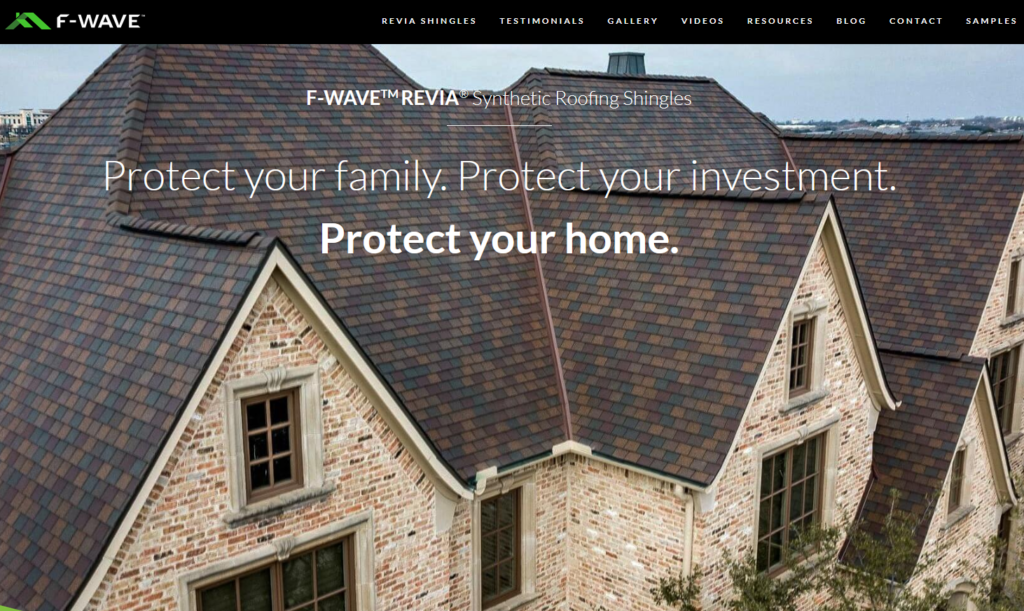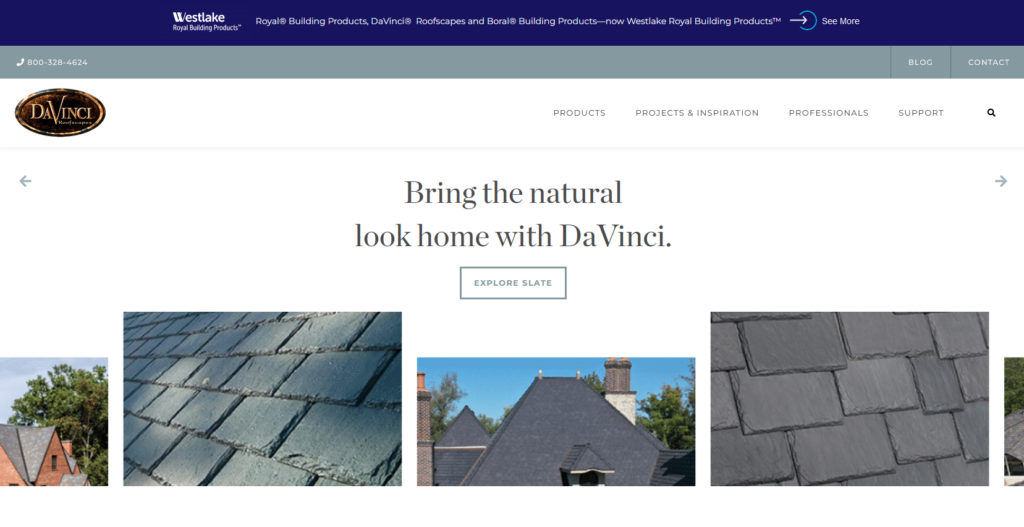Roofing alternative to shingles: a concept often overlooked in the world of construction.
Asphalt shingles have been a widely-used material in the building industry for some time, yet it’s now time to investigate other possibilities that offer distinct benefits and advantages. In this comprehensive blog post, we will delve into various roof materials options that provide excellent alternatives to traditional asphalt shingle roofs.
We’ll cover steel metal roof for its fire-proof properties and rust-resistant material; wooden shingles and clay tiles for their aesthetic appeal; synthetic materials like F-Wave Revia synthetic shingles or DaVinci roofscapes’ realistic imitations; composite tiles known for enhanced durability factors; green roofs & blue roof systems which are eco-friendly solutions offering property value increase and cooling cost reduction;
Additionally, we’ll discuss budget-friendly roll roofing options as well as built-up (BUR) materials requiring proper maintenance. Lastly, we’ll touch on the membrane and single-ply EPDM roofing installation methods while highlighting the advantages of TPO material. All along the way, we’ll address local regulations when choosing a roofing alternative to shingles and emphasize the importance of consulting with reputable professionals.
Get ready to broaden your horizons in the realm of roofing possibilities!
Table of Contents:
- Steel Metal Roof: A Durable and Stylish Roofing Alternative to Shingles
- Wood Shingles and Clay Tiles: Aesthetic & Durable Roofing Alternatives
- Synthetic Roofing Material: The Modern Alternative
- Composite Tile Options: A Budget-Friendly Alternative
- Green Roofs & Blue Roofs Systems: Eco-Friendly Roofing Alternatives
- Extensive Green Roof Designs: Low-Maintenance and Eco-Friendly
- Roll Roofing & Built-Up (BUR) Materials: Affordable and Widely-Used Alternatives
- Membrane & Single-Ply EPDM Roofs: Modern Alternatives to Shingles
- FAQs in Relation to Roofing Alternative to Shingles
- Conclusion
Steel Metal Roof: A Durable and Stylish Roofing Alternative to Shingles
Let’s face it, asphalt shingles are so last century. If you’re looking for a roofing material that stands the test of time while adding some serious curb appeal, a steel metal roof is your answer.
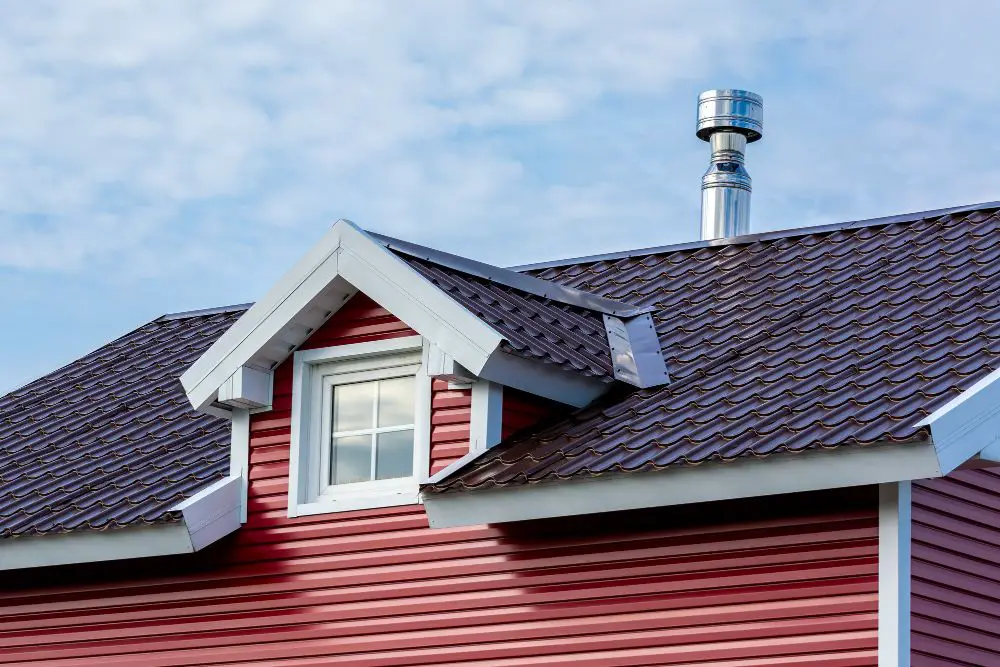
This fire-proof and rust-resistant alternative to asphalt shingle roofs can last up to 80 years. But wait, there’s more.
Longevity of Steel Metal Roofs Compared to Traditional Shingles
You might be wondering how these bad boys stack up against traditional shingles in terms of lifespan. The truth is, they blow them out of the water. Roofing material like wood or architectural shingles typically only lasts around 20-30 years before needing replacement.
Cost Analysis and Customization Options
Metal roof may be initially pricey, costing between $6-$14 per square foot; however, its long-term benefits of durability and reduced maintenance make it a cost-effective choice in the end. The durability of steel metal roof means less frequent replacements and lower maintenance costs over time.
Wooden Shingles and Clay Tiles: Aesthetic & Durable Roofing Alternative to Shingles
Are you looking for an alternative to asphalt shingles? Wooden shingles and clay tiles are two attractive options that offer both style and durability.

Benefits of Wooden Shingle Roofing Material:
- Wood shingles cost around $5-$7 per square foot and are visually appealing. They also repel insects.
- With proper maintenance, they can last up to 30 years, making them a long-lasting option for homeowners who appreciate the natural look.
Advantages of Clay Tile Roofs:
- Clay tiles, reminiscent of traditional Spanish architecture, can withstand winds of up to 150 miles per hour.
- Their lifespan can exceed 50 years with minimal upkeep required, making them an ideal choice for those seeking both style and durability in roofing materials.
Before committing to a roofing material, it is important to consider the advantages and disadvantages of each option. To help you decide which material is best suited for your needs, let’s dive deeper into each alternative.
Why Choose Wooden Shingles?
Wooden shingles are made from cedar or redwood trees, known for their resistance against decay and rotting. They offer an organic aesthetic that complements various architectural styles.
Additionally, they’re energy-efficient, providing natural insulation that keeps your home cooler in the summer and warmer in the winter. However, wood shingles require regular maintenance like cleaning and sealing to prevent moisture damage and prolong their lifespan.
What Makes Clay Tiles Stand Out?
Besides their distinctive appearance, clay tiles are non-combustible, making them an excellent choice for fire-prone areas. Their low water absorption rate prevents frost damage during colder months while still allowing air circulation beneath them for better energy efficiency.
On the downside, clay tiles can be heavy, so it’s crucial to ensure your deck can support their weight before installation.
In conclusion, both wooden shingles and clay tiles offer unique benefits as materials options beyond traditional asphalt shingles. Take time to consider which one best suits your needs.
Key Takeaway:
Looking for an alternative to asphalt shingles? Wooden shingles and clay tiles are two attractive options that offer both style and durability.
Wooden shingles cost around $5-$7 per square foot, repel insects, last up to 30 years with proper maintenance while clay tiles can withstand winds of up to 150 miles per hour, have a lifespan exceeding 50 years with minimal upkeep required but can be heavy so it’s crucial to ensure your roof deck can support their weight before roof installation.
Synthetic Roofing Material: The Modern Roofing Alternative to Shingles
Let’s talk about synthetic roofing material. These modern roofing alternatives, such as F-Wave Revia synthetic shingles and DaVinci roofscapes, are becoming increasingly popular due to their strength, appearance, and cost efficiency. In this post, we’ll focus on two noteworthy options: F-Wave Revia synthetic shingles and DaVinci roofscapes.
Features of F-Wave Revia Synthetic Shingles
F-Wave Revia synthetic shingles are a game-changer in the world of roofing material options. With a 5-year hail-proof warranty, they offer superior strength compared to conventional asphalt shingles.
F-Wave states that these shingles can withstand extreme weather conditions while maintaining their appearance over time. Bonus: They’re also eco-friendly.
Overview on DaVinci Roofscapes
Moving on to DaVinci roofscapes, another fantastic alternative for homeowners seeking both durability and aesthetics without breaking the bank. This product line mimics genuine slate stone or wood shake but is made from composite materials that require less maintenance than natural counterparts.
The result? A beautiful roof surface with longevity at an affordable price point.
In conclusion, if you’re considering replacing your current asphalt shingles or exploring new materials for a construction project, don’t overlook these modern synthetic options. F-Wave Revia and DaVinci roofscapes offer a winning combination of durability, aesthetics, and cost-effectiveness that can help you achieve the perfect balance between form and function. Upgrade your home or building project with these innovative roofing material options.
Composite Tile Options: A Budget-Friendly Roofing Alternative to Shingles
Are you searching for a roofing alternative that won’t break the bank? Look no further than composite tiles.
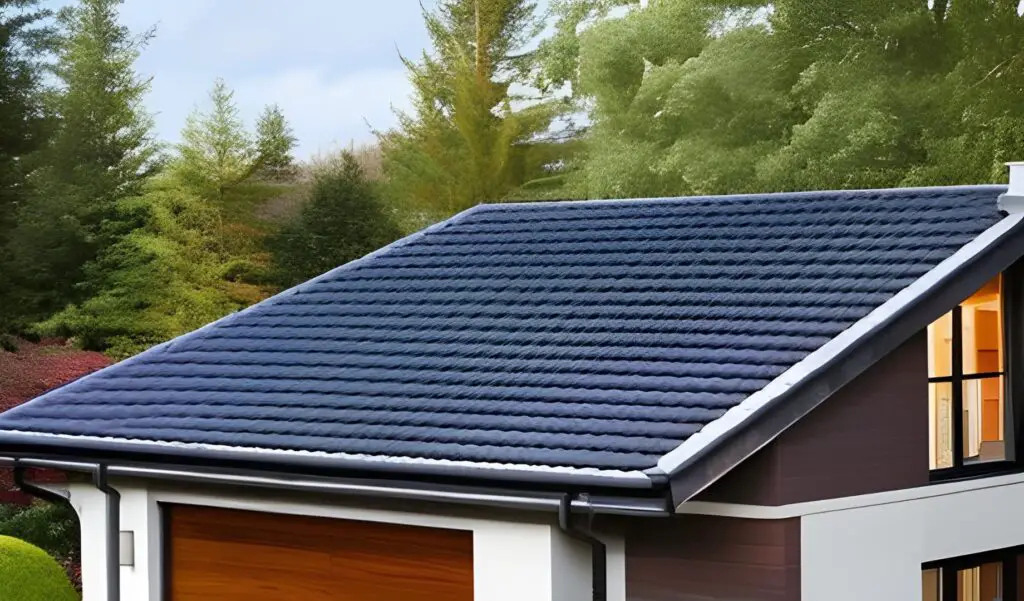
These versatile options offer similar benefits as other alternatives at an average cost of $400-$600 per tile. But wait, there’s more.
Comparison between Composite Tiles vs Other Roofing Alternative to Shingles
Durability: Like metal and clay roofs, composite tiles are designed to withstand harsh weather conditions.
Maintenance: They require minimal upkeep compared to wood shingles or asphalt shingle roofs.
Aesthetics: You can choose from various styles and colors that mimic traditional materials such as slate or wood shakes.
Factors Affecting the Price Range
The price of composite tiles varies depending on several factors. Let’s explore them:
- Type of material used: Polymer-based composites tend to be more expensive than those made from recycled materials like rubber or plastic.
- R-value (insulation): Tiles with higher R-values provide better insulation but come at a higher cost.
- Add-ons: If you want extra features such as UV protection or fire resistance, expect your overall costs to increase slightly.
Now that we’ve covered composite tiles, let’s explore some eco-friendly roofing options.
Green Roofs & Blue Roofs Systems: Eco-Friendly Roofing Alternative to Shingles
Are you in search of a roofing alternative that is both durable and environmentally friendly? Look no further than green roofs and blue roof systems.
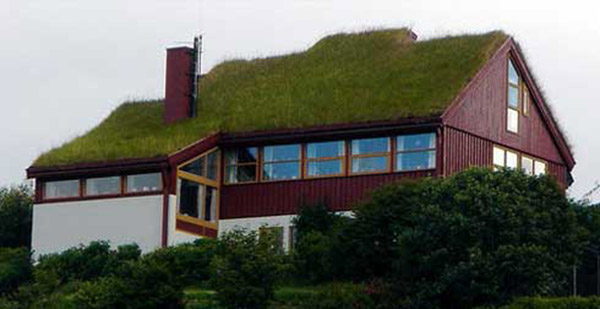
Green roofs, covered with vegetation, offer numerous benefits while potentially increasing your property value by over $15k. On the other hand, blue roofing systems help conserve water by storing it for later use in landscaping irrigation.
Benefits of Green Roofs and Their Impact on Property Values
Green roofs are not only visually appealing but also offer insulation to reduce energy costs during hot summers and cold winters. They also absorb rainwater, which helps prevent runoff-related issues like flooding or erosion around your home. Bonus points: they create habitats for pollinators such as bees and butterflies.
Blue Roofing Systems for Water Conservation
In urban areas where stormwater management is crucial, blue roofs come in handy as they temporarily store rainwater before releasing it gradually into the drainage system. This controlled release prevents overwhelming sewer systems during heavy rainfall events – a win-win situation.
Choosing Between Green or Blue Roof Systems
- Determine which option aligns better with your environmental goals. Are you more interested in supporting local ecosystems or conserving water?
- Consider the maintenance requirements for each system. Green roofs may need more upkeep, while blue roofs are relatively low-maintenance.
Ultimately, green and blue roof systems offer eco-friendly alternatives to traditional roof materials like asphalt shingles, wooden shingles, and architectural shingles. These alternatives not only benefit the environment but also add value to your property. Other roofing material options include metal roofing, tile roofs, rolled roofing, flat roofs, and roof decks.
So why not give them a try and make Mother Earth proud?
Extensive Green Roof Designs: Low-Maintenance and Eco-Friendly
Are you considering a green roof but don’t want the hassle of constant upkeep? No worries.
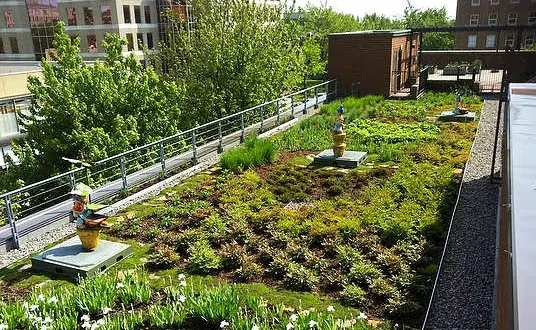
me introduce you to extensive green roofs – your low-maintenance, eco-friendly solution. These types of roofs are perfect for homeowners who want to enjoy the benefits of a green roof without spending too much time on maintenance.
Advantages of Low-Maintenance
Unlike their intensive counterparts, extensive green roofs require minimal watering and care. The secret?
They use lightweight soil mixtures that retain moisture better than traditional soils. This means less frequent watering is needed, saving both time and resources.
Suitable Plant Selections
Choosing the right plants is crucial for the success of an extensive green roof. You’ll need hardy species that can thrive in shallow soil with little water or nutrients.
Sedums (stonecrops) are popular choices due to their drought-tolerance and attractive appearance. Native grasses like buffalo grass or blue grama also make excellent options as they adapt well to local climates.
Conclusion: A Win-Win Solution for Homeowners & the Environment.
By opting for an extensive green roof, you’re not only reducing maintenance efforts but also contributing to a healthier environment. A definite success.
Ready to make the switch? Consult with a professional who specializes in green roofs and start enjoying the benefits of this eco-friendly roofing alternative.
Roll Roofing & Built-Up (BUR) Materials: Affordable and Widely-Used Roofing Alternative to Shingles
Let’s talk about budget-friendly roofing alternatives, specifically, roll roofing and built-up (BUR) materials. These options are popular among cost-conscious consumers while still providing durability and longevity.
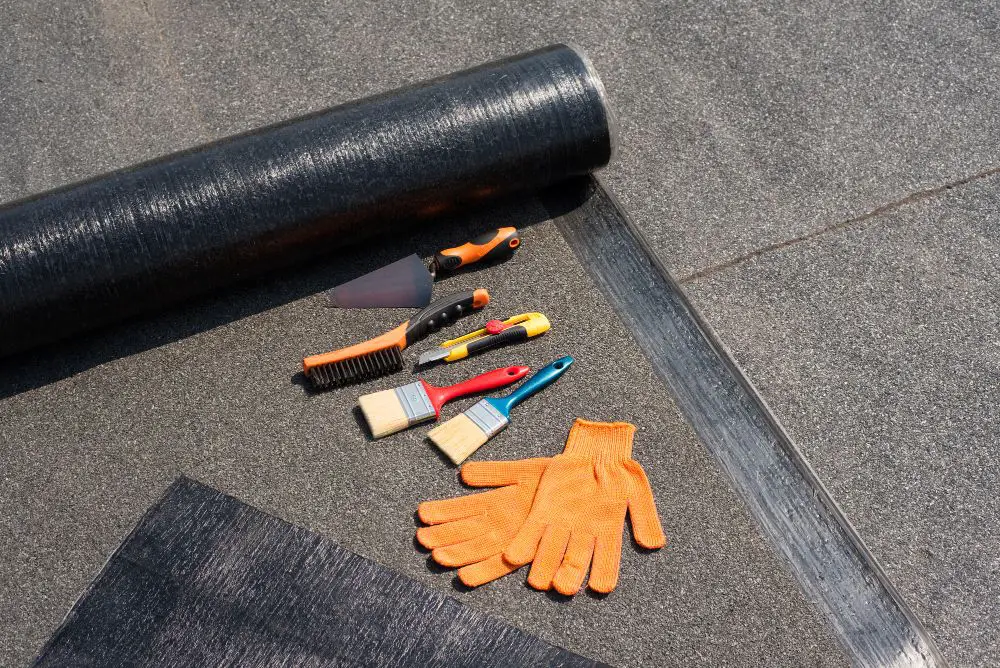
Overview of Roll Roofing Installation and Lifespan
First up, roll roofing. This material is easy to install with a simple process that involves rolling out the material onto your roof deck.
MyRoof provides an excellent guide for DIY enthusiasts looking to tackle this project themselves. The lifespan of roll roofing typically lasts around ten years, making it a solid choice for those seeking affordability without sacrificing too much in terms of quality.
Proper Care and Maintenance for Built-Up (BUR) Materials
Moving on to built-up (BUR) materials – one of the most widely-used options in the industry. MyRoof offers valuable insights into maintaining these roofs properly. Careful maintenance is crucial as walking or power washing BUR surfaces can cause damage over time.
Budget-Friendly Choices Without Compromising Quality
In summary, both roll roofing and built-up (BUR) materials provide affordable alternatives to traditional asphalt shingles without compromising too much on durability and lifespan. By understanding the installation process, proper care, and maintenance for these materials, you can make an informed decision that best suits your budget and roofing needs.
Ready to explore more roofing material options? Dive into our comprehensive guide here.
Membrane & Single-Ply EPDM Roofs: Modern Roofing Alternatives to Shingles
Let’s talk about a game-changing alternative to traditional shingles – membrane and single-ply EPDM roofs.

These roofing solutions provide a long-lasting, simple to fit and economical solution that is hard to ignore.
Ready to dive in? Let’s go.
Installation Process for Membrane/Single-Ply EPDM Roofs
The beauty of single-ply EPDM roofing lies in its simplicity.
No need for countless nails or complex layering; just use seam tape to join large pieces together on your roof surface.
This process not only saves time but also reduces the risk of leaks compared with conventional asphalt shingle installations.
Introduction to TPO as a Modern Alternative
If you’re looking for something even more cutting-edge, meet TPO (Thermoplastic Olefin), the new kid on the block in roofing materials.
TPO offers similar benefits as EPDM regarding durability and energy efficiency while being available in various colors – perfect if aesthetics are essential for your project.
Why Choose Membrane & Single-Ply Roofing?
- Durability: These materials boast excellent resistance against weathering, UV rays, and punctures.
- Energy Efficiency: Both EPDM and TPO are known for their ability to reflect sunlight, reducing cooling costs in warmer climates.
- Versatility: Suitable for both flat roofs and sloped surfaces, membrane/single-ply roofing materials cater to a wide range of architectural styles.
In summary, if you’re seeking an alternative to traditional shingles that offers durability, energy efficiency, and versatility – look no further than membrane or single-ply EPDM/TPO roofing systems.
Explore these modern options today for your next roof installation project – you won’t be disappointed.
FAQs in Relation to Roofing Alternative to Shingles
What is the life expectancy of a composite roof?
The life expectancy of a composite roof typically ranges from 30 to 50 years, depending on the quality and installation. Composite roof materials are designed for durability and low maintenance, making them an attractive long-term option. For more information on composite roofs, check out DaVinci Roofscapes.
How can I protect my roof without shingles?
There are several alternatives to traditional shingle roofing such as metal roofs, clay tiles, wood shakes or synthetic materials like F-Wave Revia Shingles. These options offer various benefits including increased longevity, energy efficiency and aesthetic appeal. Learn more about these alternatives in our article on roofing alternative to shingles.
What is the cheapest material to replace a roof?
Roll roofing is often considered one of the most affordable options for replacing a roof due to its lower cost per square foot compared to other materials. However, it may not be suitable for all types of buildings or climates and has a shorter lifespan than some alternatives. Explore different roof replacement costs before making your decision.
Do metal roofs leak more than shingles?
No, properly installed metal roofs do not leak more than shingle roofs. In fact, metal roofs can be more resistant to leaks due to their durability and seamless design.
However, poor installation or lack of maintenance may lead to potential leak issues. Learn about metal roofing’s pros and cons before making a decision.
Roofing Alternative to Shingles – A Recap
For those looking for a roofing alternative to shingles, there are a variety of materials available such as steel metal roof, wood shingles and clay tiles, or synthetic options like F-Wave Revia synthetic shingles and DaVinci Roofscapes’ imitation materials.
Steel metal roof offers fire-proof properties and rust-resistant material, while wooden shingles and clay tiles provide insect-repelling qualities and aesthetic appeal. Synthetic materials like F-Wave Revia synthetic shingles and DaVinci Roofscapes’ imitation materials offer realistic looks without maintenance.
Green roofs & blue roof systems provide eco-friendly benefits that can increase property value while reducing cooling costs. Roll roofing is budget-friendly, but built-up roofs require proper maintenance. Membrane and single-ply EPDM roofing have installation methods that vary in difficulty with TPO material offering advantages.

